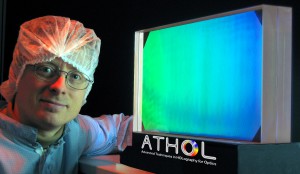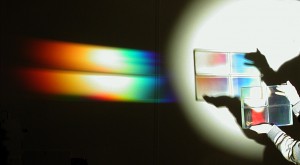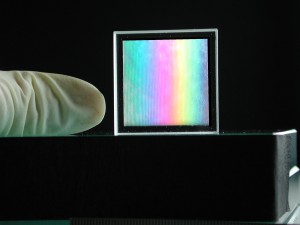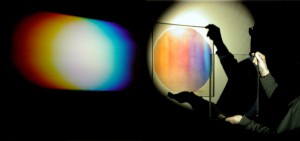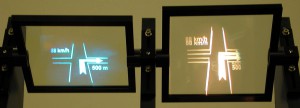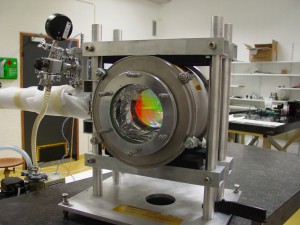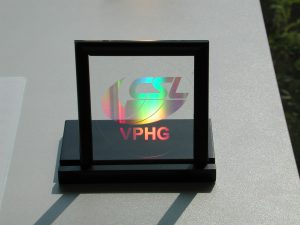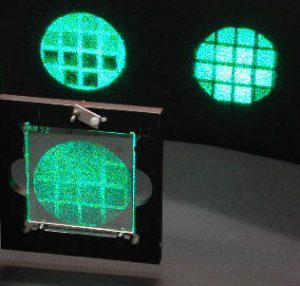Volume Phase Grating
Abstract
Volume phase gratings (VPG) are dispersive elements use in spectrometers. Their efficiency outmatches surface relief gratings and prism and can reach 99%. The physics principle beneath those elements is the diffraction of the light by bulk index modulation of the material.
Holographic recording technique allows to manufacture very large VPG to accommodate large beam diameter found in astronomical instrument. We use dichromated gelatin as the recording media since this is one of the material with the largest index modulation.
The same material and technique can be used for generating holographic optical elements (HOE) like diffractive lenses and mirrors. So, large head up display combiner not respecting the Snell law have been demonstrated.
The Liège Space Center have demonstrated some new techniques that can be applied to VPH addressing issues encountered in new instruments and applications: mosaic technique, cryogenic sustainability, large dispersion, IR and UV optical bandwidth are some of them.
This research activity has let to the creation of a company to manufacture and distribute VPG: ATHOL (contact: P. Lemaire)
Publications
- F. Garzón et al., “Performances of NIR VPHGs at cryogenic temperatures”, in Astronomical Telescopes and Instrumentation 2008, SPIE Proceedings Vol. 7018, p. 70184T (2008) pdf
- P. Spanò et al., “Challenges in optics for Extremely Large Telescope instrumentation”, Astronomische Nachrichten, vol. 999, pp 789-814(2006) pdf
- P.-A. Blanche et al, “Diffracted wavefront measurement of volume phase holographic grating at cryogenic temperature”, Applied Optics, vol. 45, pp 6910-6913 (2006) pdf
- P.-A. Blanche et al., “Volume Phase Holographic Gratings: large size and high diffraction efficiency”, Optical Engineering, vol. 43, pp 2603-2612 (2004) pdf
- P.-A. Blanche et al., “Mosaiced and high line frequency VPH gratings for astronomy”, in Optical Fabrication, Metrology, and Material advancements for Telescopes, E. Atad-Ettedgui and P. Dierickx, eds., SPIE Proceedings, vol. 5494, pp 206-216 (2004) pdf
Pictures
- The WIYN diffraction grating. Actual size: 500 mm in the dispertion dimention
- Mosaic VPG
- Small VPG for handheld spectrometer
- Large (380 mm) VPG for the Brera observatory (Italy)
- Head up display comparing VPG and natural double reflection. The projected images are dynamics.
- Cryogenic testing of the VPG and diffracted wavefront
- The holographic exposition setup in CSL/ATHOL
- Artistic VPG with CSL logo
- First exposure versus efficiency test
<< Back to Research Interests

